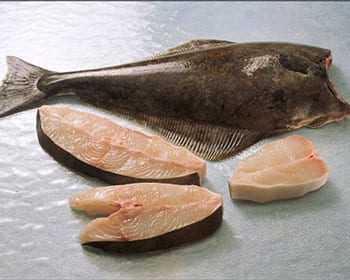
Imagine a bendable tablet computer or an electronic newspaper that could fold to fit in a pocket.
The technology for these devices may not be so far off. Northwestern University researchers have recently developed a Northwestern University-based ink that is highly conductive and tolerant to bending, and they have used it to inkjet-print graphene patterns that could be used for extremely detailed, conductive electrodes.
The resulting patterns are 250 times more conductive than previous attempts to print graphene-based electronic patterns and could be a step toward low-cost, foldable electronics.
A paper describing the research, “Inkjet Printing of High Conductivity, Flexible Graphene Patterns,” was published April 8 in the Journal of Physical Chemistry Letters.
“Graphene has a unique combination of properties that is ideal for next-generation electronics, including high electrical conductivity, mechanical flexibility, and chemical stability,” said Mark Hersam, professor of materials science and engineering at Northwestern’s McCormick School of Engineering and Applied Science. “By formulating an inkjet-printable ink based on graphene, we now have an inexpensive and scalable path for exploiting these properties in real-world technologies.”
Inkjet printing has previously been explored as a method for fabricating transistors, solar cells, and other electronic components. It is inexpensive, capable of printing large areas, and can create patterns on a variety of substrates, making it an attractive option for next-generation electronics.
Inkjet printing with graphene — ultra-thin sheets of carbon with exceptional strength and conductivity — is extremely promising, but it has remained a challenge because it is difficult to harvest a sufficient amount of graphene without compromising its electronic properties. Exfoliating, or breaking apart, materials such as graphite often require oxidizing conditions that make the resulting graphene oxide material less conductive than pure carbon. Pristine unoxidized graphene can be achieved through exfoliation, but the process requires solvents whose residues also decrease conductivity.
The Northwestern researchers have developed a new method for mass-producing graphene that maintains its conductivity and can be carried out at room temperature using ethanol and ethyl cellulose to exfoliate graphite.
The Latest Bing News on:
Foldable Electronics
- Leaked Render Of Samsung Galaxy Z Fold 6 Appears Online Suggesting Design Update; What To Expecton May 8, 2024 at 11:42 pm
According to recent leaks, the upcoming Samsung Galaxy Z Fold 6 is anticipated to boast a 7.6-inch inner display alongside a 6.2-inch outer display. Powering this foldable smartphone is rumored to be ...
- Amazon Pet Day is almost over. Here are the last-minute deals you need to know abouton May 8, 2024 at 6:04 am
Amazon Pet Day is in its final day. The two-day sales event that’s all about our furry friends went live at 3 a.m. EST Tuesday and is expected to go until 3 a.m. EST Thursday.
- Automotive Electronicson May 6, 2024 at 4:59 pm
Molex has introduced MX-Dash, a family of single automotive connectors that combine power, signal and high-speed data inserts for zonal architectures. In wire-to-wire and wire-to-board form, they are ...
- When Will Apple Release a Foldable iPhone?on May 6, 2024 at 5:59 am
Another foldable display concept from LG Rumors ... Apple's designs are said to have a "mostly invisible hinge" with electronics located behind the display rather than two panels separated by ...
- Apple's Work on a Foldable iPad: What We Knowon May 6, 2024 at 5:59 am
We've been hearing rumors about Apple's exploration of a foldable iPhone for years now, but the Cupertino company is also experimenting with other foldable form factors, including a larger ...
- 20-inch foldable iPad to launch in 2025, a year before a foldable iPhoneon May 6, 2024 at 3:50 am
Apple will reportedly launch a foldable iPad in 2025, with a foldable iPhone to follow a year later - here's what you need to know.
- A new patent about a folding iPhone has surfaced, but is it a good idea?on May 5, 2024 at 12:37 pm
A new Apple patent fuels rumors of a foldable iPhone, showcasing a focus on hinge innovation and potential for a clamshell design.
- Save 50% off Your Sam’s Club Membershipon May 2, 2024 at 8:46 am
Tired of constantly searching for the best deals on everyday essentials, groceries, electronics, and more ... this sturdy Member’s Mark all-terrain folding wagon cart boasts a durable design that ...
- Forget pricey flagships — this could be the year of sub-$500 foldable phoneson April 27, 2024 at 5:00 pm
One trend I was happy to see in 2023 was that we saw many more foldable phones than any year before. This surge also led to prices falling in a big way, so much so that flip phone-style foldables ...
- Ultra-Thin Glass Market Projected to Surpass US$ 29.5 Billion by 2033 with a CAGR of 10.7%on April 26, 2024 at 3:31 am
The global ultra-thin glass market size is anticipated to see a CAGR of 10.7% from 2023 to 2033. By 2033, it is set to exceed a valuation of US$ 29.5 billion. The market is expected to be worth US$ 10 ...
The Latest Google Headlines on:
Foldable Electronics
[google_news title=”” keyword=”Foldable Electronics” num_posts=”10″ blurb_length=”0″ show_thumb=”left”]
The Latest Bing News on:
Graphene-based ink
- Wonder Material 'More Remarkable' Than Graphene Has Medical Potentialon May 7, 2024 at 8:55 am
Borophene is already thinner and more conductive than graphene, and scientists have altered it to make it even more special.
- Finnlines Adopts Graphene-based Hard Foul Release Hull Coatingon May 7, 2024 at 8:30 am
Finnlines has turned to a innovative graphene-based hard foul release hull coating to reduce fuel consumption and emissions ...
- Graphene in Biomedicine: Opportunities and Challengeson May 5, 2024 at 5:00 pm
Graphene, whose discovery won the 2010 Nobel Prize in physics, has been a shining star in the material science in the past few years. Owing to its interesting electrical, optical, mechanical and ...
- Pacific Basin to apply graphene-based propeller coatings on 40 shipson April 26, 2024 at 10:44 am
Following successful application and obtaining positive results from the graphene-based propeller coating on one of its Supramax dry bulk vessels, Pacific Basin has started the rollout of XGIT-PROP ...
- Conductive Ink Market Is Encouraged to Reach USD 5.6 Billion by 2033 at a CAGR of 6.3%on April 26, 2024 at 2:15 am
According to Market.us, the Conductive Ink Market size is projected to surpass around USD 5.6 billion by 2033, from USD 3.5 billion in 2023, and it is poised to reach a registered CAGR of 6.3% from ...
- Advancing biomedical diagnostics: Graphene sensor inks pave the way for precision biosensingon April 10, 2024 at 5:00 pm
These inks have the ability to revolutionize ... and manufacture of plasma-functionalised graphene-enhanced products, all primarily based in the UK. Manufacture and sale of Silicon Carbide cutting ...
- Graphene-enhanced biosensor inks: Revolutionizing healthcare technologyon March 13, 2024 at 2:17 am
The inks improve electrical conductivity and enzyme immobilization by adding extra chemistries and cutting-edge materials like graphene. The manufacture and disposal of medical equipment have a ...
- 3D printable 2D materials based inks show promise to improve energy storage deviceson August 17, 2020 at 2:36 am
For the first time, a team of researchers, from the Department of Materials and the National Graphene Institute at The University of Manchester have formulated inks using the 2D material MXene, to ...
- Global Graphene Companies – Manufacturers and Supplierson August 14, 2020 at 11:38 pm
Graphene is the name for a honeycomb sheet of carbon atoms. It is the strongest known material, yet it is also stretchy. It can conduct electricity 100x better than silicon and heat 10x better than ...
- 3D Grapheneon August 13, 2020 at 6:15 pm
3D graphene refers to a material that consists of a graphene-based framework that has a porous, three-dimensional structure. This material can be referred to as a graphene aerogel or a 3D-printed ...
The Latest Google Headlines on:
Graphene-based ink
[google_news title=”” keyword=”graphene-based ink” num_posts=”10″ blurb_length=”0″ show_thumb=”left”]











